
Table of Contents
Quick Summary
- Eco-friendly fabrics reduce environmental harm and support sustainable living.
- Conventional fabrics often use chemicals and synthetics that harm health and nature.
- Options like cotton, hemp, linen, jute, bamboo, wool, cork, Tencel, rPET, recycled denim, and natural leather provide green alternatives.
- Benefits include reduced carbon footprint, better indoor air, durability, and stylish aesthetics.
- Each fabric has upsides and downsides.
- Main selection factors include durability, comfort, maintenance, design, certifications, and budget.
- Styling tip includes mixing textures and colours for layered, creative looks.
- Proper care extends fabric life and supports sustainability.
Eco-friendly fabrics for upholstery in your home are a sustainable choice. Sustainability is no longer a catchword in debate. It is a global goal now to save our planet, so we can’t leave even one stone unturned to follow the code of sustainability
Our lifestyle shapes how we design, decorate, and live in our homes. Every choice we make, from the paint on our walls to the fabrics on our upholstery, has an impact on the environment in some way.
Upholstery fabrics, often overlooked, play a big role in creating a healthy home environment. Many traditional fabrics are chemically treated, made from petroleum-based materials, or involve processes that harm the environment and ecosystems.
What is unique about Eco-friendly Fabrics?
Eco-friendly fabrics are crafted with natural, renewable, or recycled fibres and processed in ways that minimise environmental harm. These fabrics are healthier for families, last longer, and add aesthetic appeal without any guilt about their carbon footprint.
In this article, Gharpedia discusses the reasons to consider eco-friendly fabrics for an upscale home decor. Additionally, the discussion will cover the best available options for eco-friendly fabrics, related styling tips, and the care and maintenance of these upholstery fabrics.
Benefits of Choosing Eco-friendly Fabrics
Small steps make great achievements. The benefits of choosing eco-friendly fabrics over non-eco-friendly variants may not seem evident overnight on your home décor or environment, but they lead to deep-seated change in the long term. Let’s discuss more:
1. Environmental Impact
The manufacturing process of conventional textiles often involves the use of synthetic fibres, chemical pesticides and dyes, contributing to pollution. Environmentally friendly upholstery fabric options reduce pollution by utilising natural or recycled resources. When you choose them, it helps lower your home’s carbon footprint. Hence Eco-friendly fabrics like organic cotton upholstery and Cork fabric are non-toxic and hypoallergenic.
2. Health Benefits
Many synthetic fabrics release volatile organic compounds (VOCs), which can trigger allergies, headaches, or respiratory discomfort in users. Natural and certified sustainable fabrics are non-toxic and hypoallergenic. These eco-friendly fabrics are safer for all.
3. Durability
Eco-friendly fabrics, for example, hemp and wool, are naturally strong and long-lasting. They can resist wear and tear better. Their durability results in fewer replacements. It creates lesser waste material and saves money.
4. Aesthetic Value
There is a myth that eco-friendly fabrics create a bland interior, given their neutral colours. But that’s not the reality. The range of eco-friendly fabrics is extensive. From the crisp elegance of linen to the cosy softness of organic cotton, these fabrics come in a variety of textures, patterns, and shades that can complement any décor. Cork fabric provides a modern, lightweight option, combining style with sustainability.
5. Consumer Trend
As there is a growing concern about adapting to an eco-friendly green living style, eco-friendly fabrics are available in various stylish textures and colours to match the consumer trend.
These are the benefits of using eco-friendly fabrics for making upholstery in your home. You may not enjoy all the benefits instantly, but on a short- and long-term basis, these benefits will improve the quality of your life for sure.
Let’s check now the options of 10 + eco-friendly fabrics available in the market that you can use for making stylish and sustainable upholstery furniture.
10+ Variants of Eco-Friendly Fabric for Your Upholstery Furniture in 2025
1. Organic Cotton Fabric
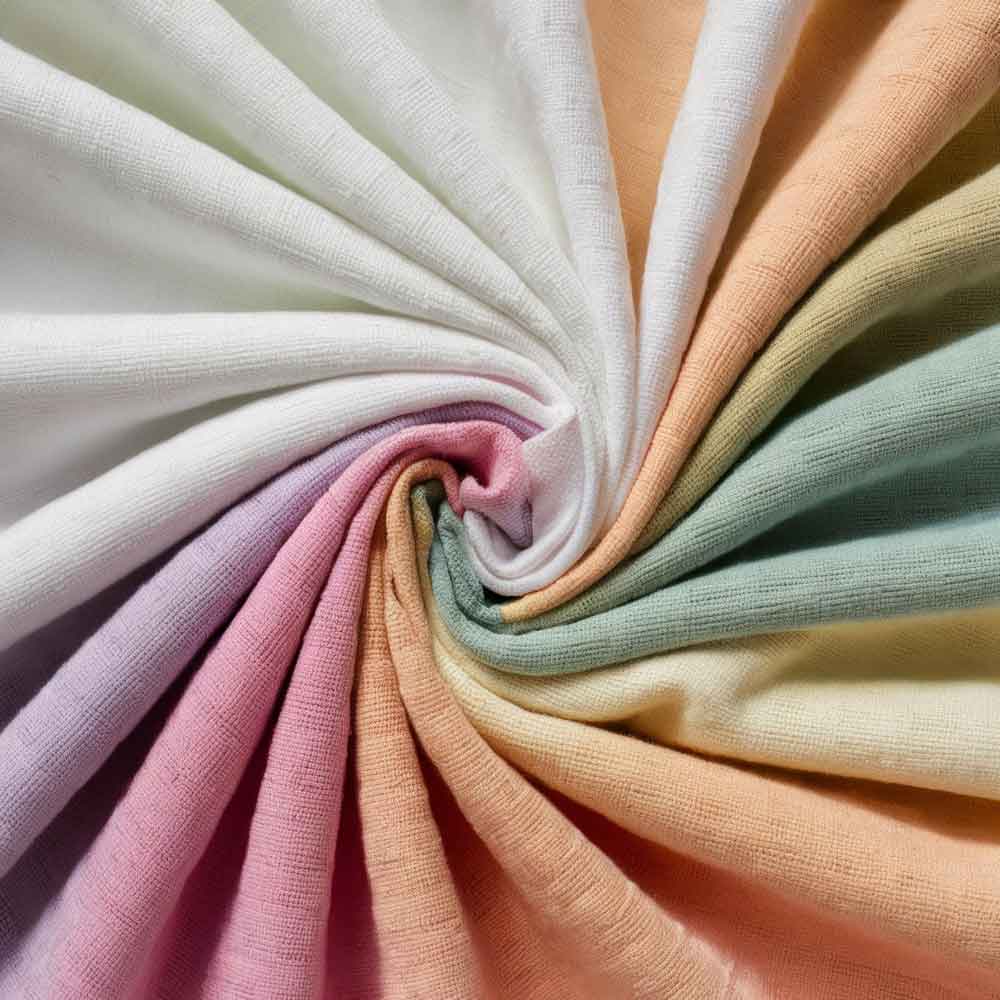
Organic cotton is a sustainable material for upholstery and furnishing. As a typical feature of organic cotton, it is grown without the use of harmful pesticides or chemical treatments. It’s soft, durable, breathable, and hypoallergenic, making it safe for sensitive skin. Its natural texture adds comfort and style to sofas, cushions, curtains, and bedding, while supporting eco-friendly, healthier homes and reducing environmental impact.
Upsides:
- Eco-friendly and produced without harmful chemicals.
- Promotes healthier indoor air quality.
- Durable for long-lasting use.
- Adds natural comfort and timeless style to interiors.
- Supports sustainability and reduces environmental impact.
Furthermore, cotton fabrics are soft to the touch and have hypoallergenic qualities. Cotton fabric is widely used to make bedsheets. So, while buying bed sheets for your beautiful home, take care of this point, it will help you to select the perfect bedsheet.



Downsides:
- Less durable than synthetics.
- Stains easily.
- Quickly fades in sunlight.
- The fabric is wrinkle-prone and stretch-prone.
- Not moisture-resistant.

2. Bamboo
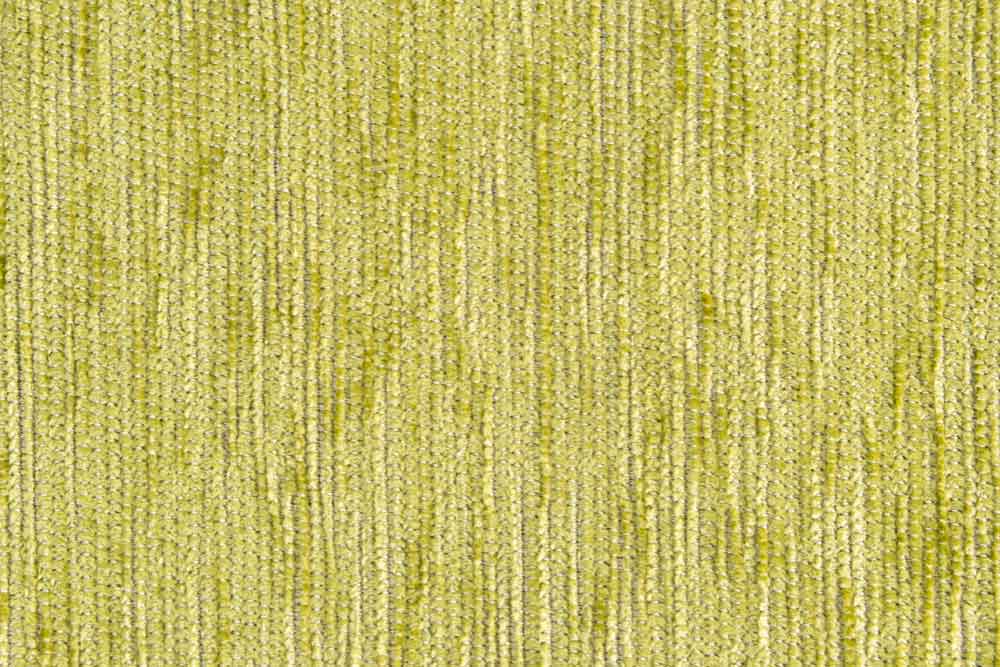
Bamboo is an eco-friendly fabric choice for upholstery furniture. The fabric seems soft and breathable; it is wrinkle-free with natural antibacterial qualities. Bamboo is biodegradable, so fabric made of bamboo is biodegradable too.
Upsides:
- Soft and comfy breathable texture.
- Naturally antibacterial and odour-resistant.
- Wrinkle-resistant and drapes well.
- Sustainable and fast-growing resource.
- Biodegradable when untreated.
Downsides:
- Pure bamboo linen is prone to wrinkles.
- Can shrink if not cared for properly.
- Some bamboo fabrics use chemical processing.
- Less durable than synthetic alternatives and expensive.

3. Hemp
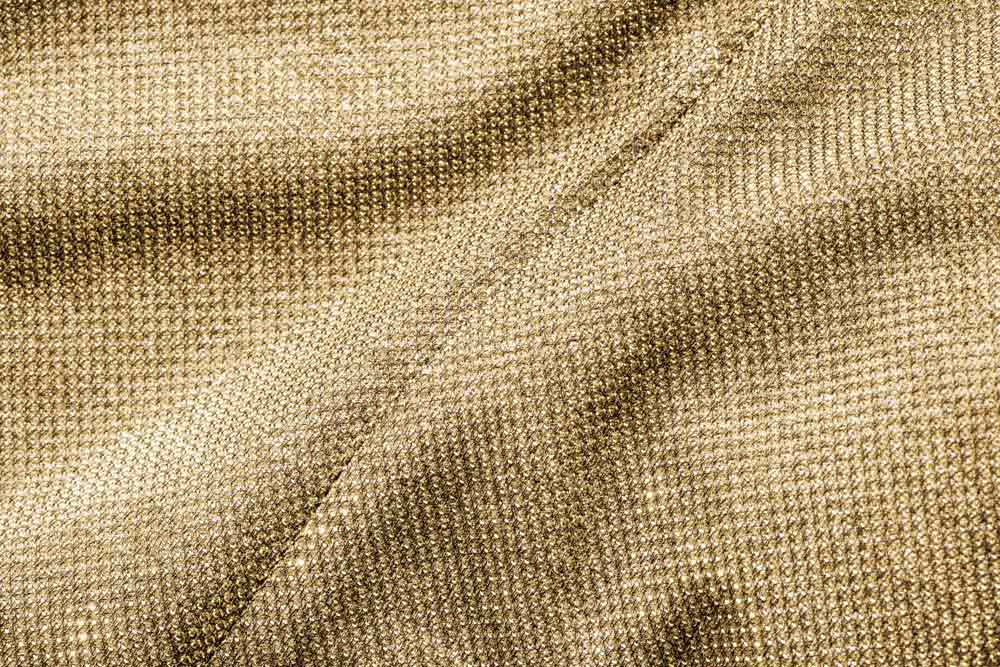
Hemp is a potential option for an eco-friendly fabric for upholstery. The fabric is durable and easily resists wear. Hemp naturally resists mould and UV damage. It softens with use but it retains its durability. Hemp-made fabric is biodegradable; it makes a sustainable choice for long-lasting upholstery needs.
Upsides:
- Extremely durable and long-lasting.
- Naturally resistant to mould and UV damage.
- Breathable and comfortable: turns softer with use.
- Requires little water and no pesticides to grow.
- Fully biodegradable and sustainable.
Downsides:
- Limited colour options and rough texture initially.
- Wrinkles easily compared to synthetics.
- Availability is limited and is expensive.
Also Read: Hempcrete as a Building Material: Pros & Cons | Properties | Applications
4. Jute
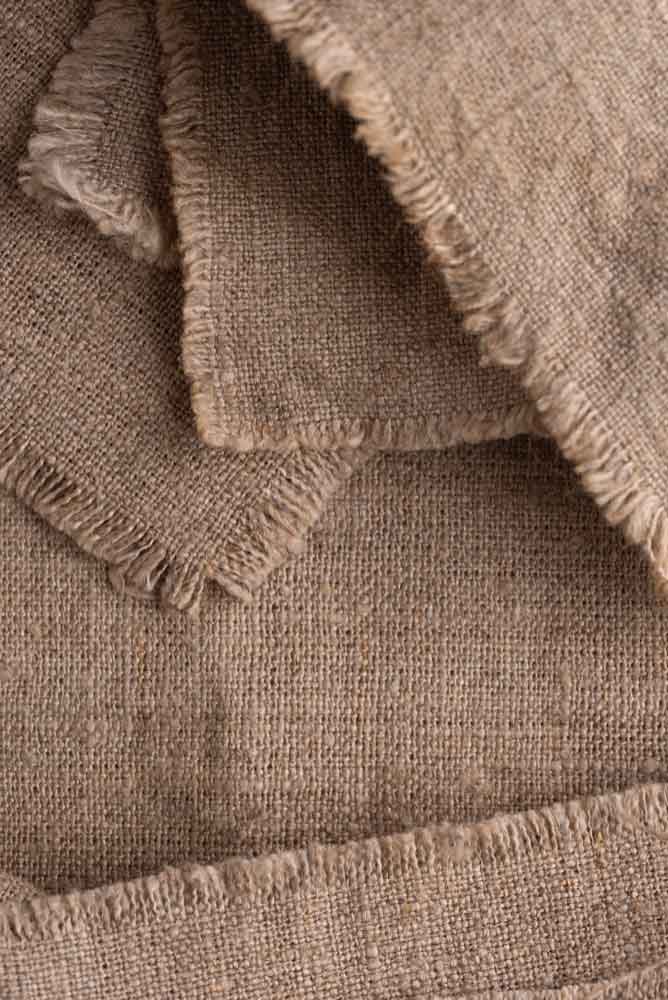
Raw jute is cultivated with minimal watering and pesticide use, making the fabric procured from it an ideal, eco-friendly material. The fabric made of jute offers a slightly coarse texture, which can easily add a natural, rustic appeal to furniture, and it pairs well with modern furnishings. Jute-made upholstery is an affordable, renewable, and stylish green option for your home.
Upsides:
- 100% natural and biodegradable.
- Fast-growing, renewable crop.
- Strong and durable fibre.
- Low watering and pesticide requirements.
- Affordable and widely available.
Downsides:
- Susceptible to moisture and mildew.
- Limited colour options and dye uptake.
- It can wear out faster in heavy-use furniture.
5. Linen
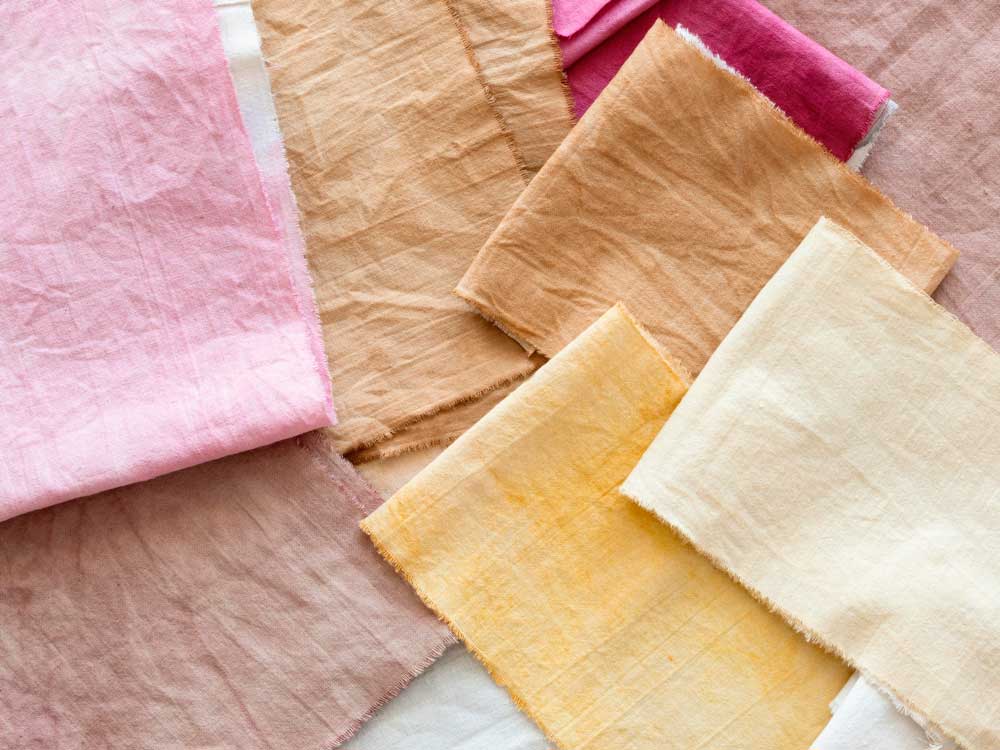
Linen is an eco-friendly upholstery fabric, manufactured from flax plants. Flax cultivation requires minimal watering and fewer chemicals to grow. Linen is breathable, durable, and naturally resistant to moths. Linen has an elegant texture, and being biodegradable ensures minimal environmental impact, making it a stylish green choice.
Upsides:
- Made from flax, which is a renewable and low-impact crop.
- Strong and durable, and it lasts for years.
- Breathable and naturally cool, biodegradable.
- Looks good and is compatible with both retro and modern decor.
Downsides:
- Wrinkles easily, with a minimal crisp appearance.
- Can stain quickly if untreated.
- Requires careful maintenance.
- More expensive and limited availability.
6. Wool

Wool is a renewable, biodegradable, and highly durable natural material, perfect for making upholstery. It is naturally insulating: it keeps homes cosy in winter and breathable in summer. Wool is also flame-resistant and is produced without any chemical treatments, making it a safe and environmentally friendly option.
Upsides:
- Naturally flame-resistant.
- Biodegradable, resistant to dirt.
- Resistant to dirt and wear.
- Available with different colour options.
Downsides:
- Wool is expensive than other fabrics.
- Sensitive to moth damage and not suitable for humid climates.
- Requires careful cleaning and maintenance.
- May feel itchy for some users.
7. Recycled Fabrics (Recycled Denim/Upcycled Fabrics)
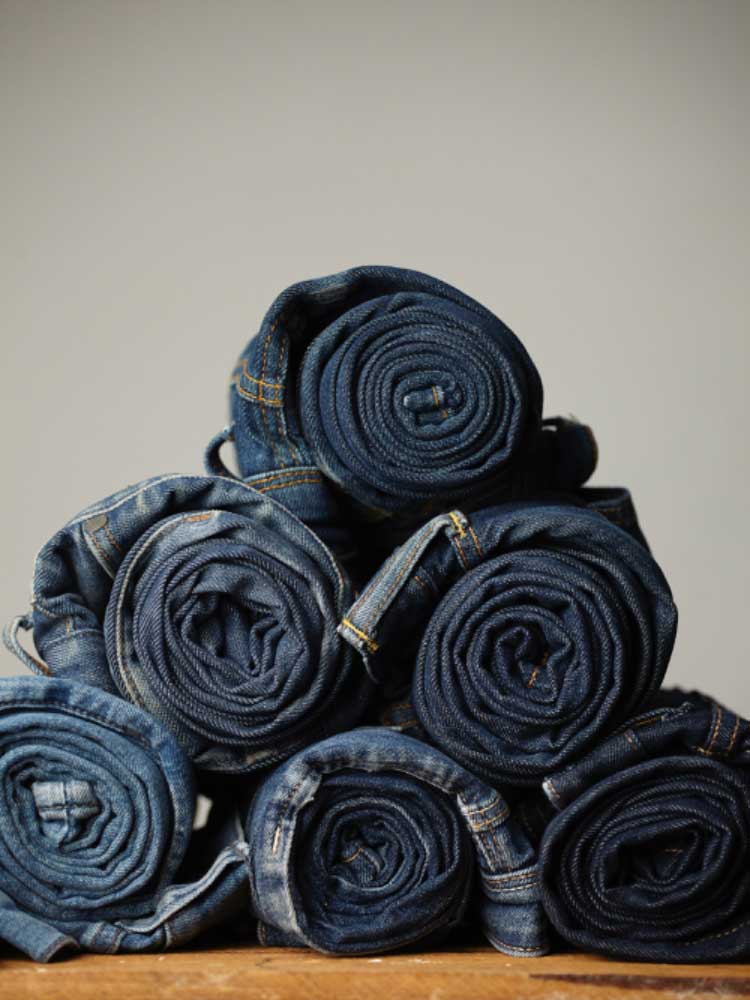
Recycled denim and upcycled fabrics breathe new life when used in making upholstery. These recycled fabrics reduce landfill waste and cut demand for new resources. These fabrics are durable and stylish; they bring unique textures and colours.
If you choose these fabrics, you are promoting the culture of recycling and reusing, helping in lowering environmental impact, and you are supporting sustainability without compromising on comfort or creativity.
Upsides:
- An eco-friendly option that can tackle textile waste and landfill impact.
- These recycled fabrics are durable with unique textures and styles.
- It promotes circular economy and sustainability at a budget-friendly price.
Downsides:
- The quality may fluctuate depending on the source
- Inconsistent in colour and texture.
- It often needs blending with synthetics for better strength.
- Availability is inconsistent.
8. Recycled Polyester (rPET)

Recycled polyester (rPET) is manufactured from used plastic bottles and textile waste. It reduces landfill and ocean pollution. It provides plastic a second life and, at the same time, reduces the dependence on fresh polyester.
Upsides:
- Uses plastic waste; the use of rPET reduces the risk of landfill and ocean pollution
- Strong and durable: it is stain and wrinkle-resistant
- rPET is available in different finishes and textures
- The option is more affordable than natural fabrics
Downsides:
- Recycled polyester is not biodegradable.
- The fabric can shed microplastics during use or cleaning.
- The fabric is less breathable compared to natural fibres
- Environmental benefit depends on recycling process used.

9. Cork Fabric

Cork fabric is manufactured from the bark of cork oak trees. The bark naturally regenerates after harvesting. It is renewable, lightweight, and water-resistant, and a green choice for making upholstery.
Upsides:
- Harvested without harming trees.
- Renewable and biodegradable.
- Lightweight yet durable, water-resistant.
- Hypoallergenic and chemical-free.
Downsides:
- Limited colour choices.
- Can fade in direct sunlight.
- Less flexible for heavy-use furniture.
- Limited Supply.
- Expensive option.
Also Read: Cork Board: A Sustainable Material for Your Interiors!
10. Tencel (Lyocell)
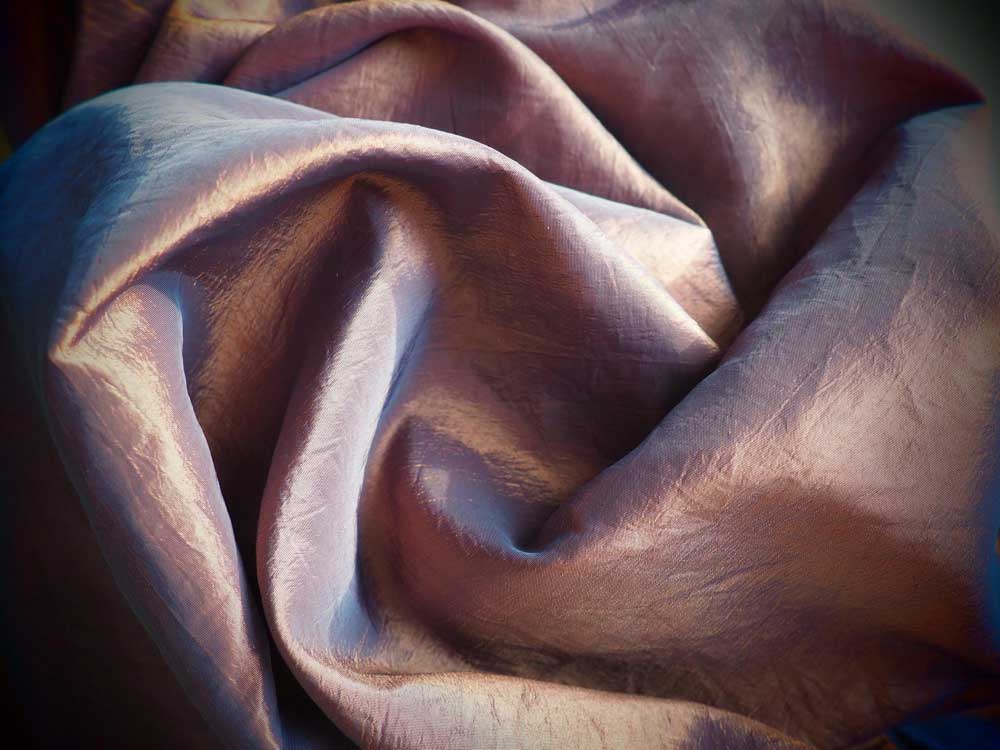
Tencel is made from sustainably sourced wood pulp. Usually, eucalyptus wood pulp is used for making this fabric. It’s produced in a closed-loop system where solvents are reused, reducing waste. It works well for upholstery for soft, breathable, and durable types. Tencel offers a modern, sustainable alternative to conventional synthetic fabrics.
Upsides:
- Made from sustainably sourced wood pulp.
- Manufactured in a closed-loop process without wastage.
- Strong and durable for upholstery making.
- Biodegradable.
Downsides:
- More expensive than other fabrics.
- Sensitive to high heat and harsh chemicals.
- Limited texture variety available.
- Availability varies depending on the region.
11. Qmonos

Qmonos is a lab-made spider silk fibre created through microbes and fermentation. Though the explanation may raise doubts about its sources, Qmonos is made from recombinant protein fibers or proteins artificially created using DNA sequences modelled on spider silk genes. This means, instead of harvesting silk from spiders, scientists insert spider silk gene sequences into microorganisms.
It is light in weight but more resilient than steel and biodegradable. The green fabric does not leave harmful waste. Its natural softness adds comfort, making it a promising eco-friendly choice for upholstery furniture.
Upside:
- Strong and durable, and ideal for long-lasting furniture fabric.
- Biodegradable, thus reduces landfill waste.
- Breathable and comfortable for seating.
- Free from animal cruelty and chemicals.
- Resistant to wear and tear.
Downside:
- Production cost is exceptionally high.
- Limited large-scale availability.
- Still under development and not widely accessible.
- May require blending with other fibres for use in upholstery.
These are the available options for eco-friendly fabrics that you can use for making upholstery. However, not all fabrics are the best choice for your home. You need to choose the eco-friendly fabrics depending on some specific factors, which Gharpedia has jotted down here.
Tips To Find the Best Eco-Friendly Upholstery Fabric for Your Home

Follow the tips mentioned here for smart selection of the eco-friendly fabric that best suits your home’s upholstery needs.
- Durability: You should choose strong fabrics that can withstand even rough usage. Comfort and Texture: You should check and compare the factors like softness, breathability, and overall feel for everyday comfort between the eco-friendly fabric options you have.
- Maintenance Needs: While choosing the eco-friendly upholstery fabric, you should consider the ease of cleaning, stain resistance, and the long-term care requirements of the options available.
- Colour and Design Options: Make sure that the chosen fabric complements your interior style and design.
- Certifications: Look for trusted labels such as GOTS, OEKO-TEX, or FSC: these labels will assure you of eco-friendly standards.
- Budget: Budget is a deciding factor. Finally, balance the cost with sustainability. Your ideal option will match both ends.
With the tips mentioned above, you can streamline your shopping for the best eco-friendly upholstery fabric in a jiffy.
Styling Tips with Eco-Friendly Upholstery Fabrics

Styling with eco-friendly upholstery fabrics depends on personal choice and creativity. Gharpedia has followed the creative trend of artistic upholstery furniture closely and presented here a few real-life suggestions that can embellish your room’s décor with unique, innovative artistry.
- You can try mixing textures like linen, hemp, and cork for a natural layered look.
- If you use neutral shades of jute or linen as a base and then add colourful accents with recycled fabrics, it can create a unique display.
- Considering pairing smooth tencel fabric with coarse jute fabric. It will create a balanced contrast which will look vibrant in modern home decor.
- If you choose wool for comfort and natural warmth in colder climates, it will add extra cosiness in your room decor. Similarly, try bamboo fabrics in tropical settings for airy and breathable vibes.
- Highlight cork fabric in accent chairs or cushions to add a unique, modern touch.
- Balance rustic jute with polished wood or metal frames for a chic industrial look.
- Use linen or hemp curtains alongside matching upholstery to create a cohesive style.
- You may pair eco-friendly upholstery with reclaimed wood furniture for a complete sustainable theme.
These tips are not ultimate options. You can create many inspiring upholstery styles with eco-friendly fabrics. Your creativity and perfection will play the magic here.
Also Read: Sofa Upholstery – What should you know before Buying?
Care and Maintenance of Eco-Friendly Fabrics
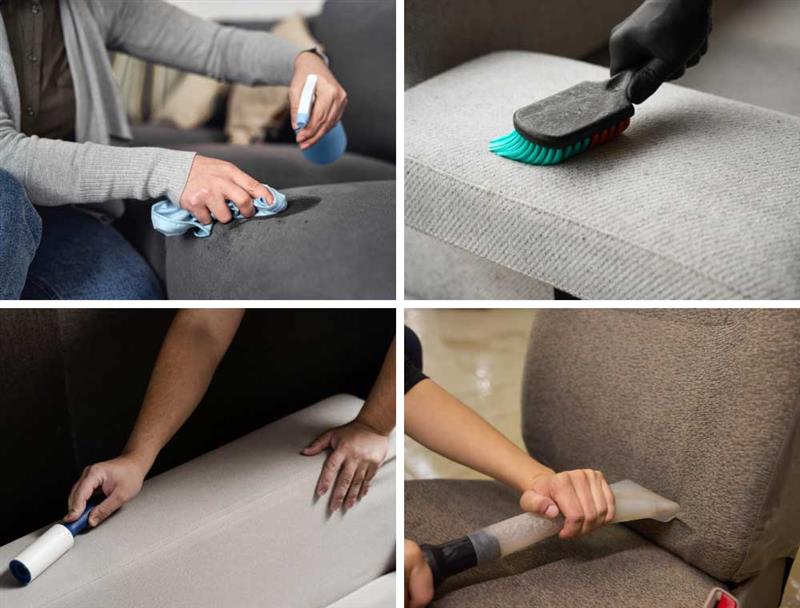
It’s well said that “a stitch in time saves nine”. Proper care and maintenance are like the stitches that can extend the service life of the eco-friendly fabrics you have bought for your dream home. Check here the suggestions from Gharpedia about care and maintenance of eco-friendly fabrics made for upholstery.
- You should vacuum upholstery regularly to remove dust and dirt buildup: it will help you maintain indoor air quality and ensure protection from dust allergy.
- Keep on rotating cushions to prevent uneven wear and fading.
- Use mild, eco-friendly detergents instead of harsh chemicals for spot cleaning.
- If there is a spill, blot it with a clean cloth to avoid stains as soon as possible.
- Avoid over-wetting natural fibres like jute, hemp, and linen.
- Keep fabrics away from direct sunlight to reduce fading.
- Gently brush the wool upholstery to maintain its softness and prevent matting.
- For Tencel or bamboo, use cold water cleaning to preserve fibres.
- Recycled polyester can be wiped easily, but should not be exposed to high heat.
- Cork fabric should be cleaned with a damp cloth and dried quickly.
- Always check care labels or certifications for specific care instructions.
- Consider professional eco-friendly cleaning services for delicate or heavily soiled fabrics.
Summing Up
If you have chosen eco-friendly fabrics for your home’s upholstery, it’s a smart and responsible choice. An eco-friendly fabric combines style and comfort with an eye on a sustainable lifestyle. Some of the eco-friendly fabric options are cotton, hemp, linen, or recycled materials, which support a healthier home and a green planet. These fabrics are durable, versatile, and timeless. The selection of eco-friendly fabrics allows you to decorate your space with purpose and reflect a commitment to sustainability in your everyday living.
Also Read: Exploring Eco-Friendly Options in Home Decor: Custom Fabrics and Upcycling Ideas
What are Innerspring & Hybrid Mattresses Made Of?
FAQs on Eco-Friendly Fabrics for Upholstery Furniture
1. Why Should You Choose Eco-Friendly Upholstery Fabrics?
Eco-friendly fabrics reduce environmental harm, improve indoor air quality, and support sustainable living. They also bring durability, comfort, and timeless style to furniture without sacrificing aesthetics.
2. What Are Some Examples of Eco-Friendly Upholstery Fabrics?
Popular options of eco-friendly fabrics include organic cotton, hemp, linen, jute, bamboo, wool, cork, Tencel, rPET, recycled denim, and natural leather. Each of these fabrics offers unique qualities for sustainable home furnishing.
3. Are Eco-Friendly Fabrics Durable Enough for Daily Use?
Yes, most are highly durable. Fabrics like hemp, wool, and rPET are designed to withstand daily wear. At the same time, linen and jute offer longevity when properly maintained and cared for.
4. Do Eco-Friendly Fabrics Require Special Maintenance?
Some fabrics, such as wool and linen, require gentle care, while others, like rPET, are easier to maintain. You can use mild cleaners and try avoiding harsh chemicals to extend their lifespan.
5. How Can I Style My Home with Eco-Friendly Fabrics?
It depends on personal choice. However, you can mix textures like linen with jute, or pair cork with wood furniture. If you try neutral bases, and add bold recycled fabrics for accents, it will balance comfort with eco-conscious design.
References
Veena B.P., Mamatha Hegde (2025) in A Review on “The Sustainable Scouring Processes of Organic Cotton Fabric” in International Journal of Latest Technology in Engineering Management & Applied Science 14(6):475-477 DOI:10.51583/IJLTEMAS.2025.140600052 [Online] Available from https://www.researchgate.net/publication/393624174_A_Review_on_The_Sustainable_Scouring_Processes_of_Organic_Cotton_Fabric
Hanan Othman, Eman Reda, Fatmaa Mamdouh, Aِِِaisha Yousi (2024) in An Eco-friendly Trend of Jute Fabric in Wet Processes of Textile Manufacturing in Journal of Textiles Coloration and Polymer ScienceDOI:10.21608/jtcps.2024.258892.1262 [Online] available from https://www.researchgate.net/publication/378454841_An_Eco-friendly_Trend_of_Jute_Fabric_in_Wet_Processes_of_Textile_Manufacturing






























